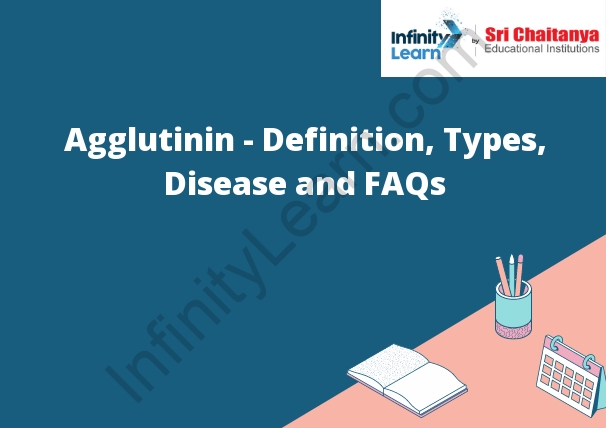Table of Contents
What is Agglutinin ?
Agglutinin is a type of antibody that helps the body to fight infection. Agglutinins are produced by B cells in response to an infection. They attach to pathogens, such as bacteria or viruses, and help to destroy them.

Types of Blood
There are four types of blood: A, B, AB, and O. Each type is determined by the presence or absence of two antigens on the surface of red blood cells.
Type A blood has the antigen A on the surface of red blood cells. Type B blood has the antigen B on the surface of red blood cells. Type AB blood has both antigens A and B on the surface of red blood cells. Type O blood has neither antigen A nor antigen B on the surface of red blood cells.
People with type A blood can donate blood to people with type A or type AB blood, but not to people with type B or type O blood. People with type B blood can donate blood to people with type B or type AB blood, but not to people with type A or type O blood. People with type AB blood can donate blood to people with type AB, type A, or type B blood. People with type O blood can donate blood to people with type O blood only.
Rh Systems
Rh blood group systems are a group of blood types determined by the presence of the Rh antigen on red blood cells. The Rh antigen is also called the D antigen. The Rh antigen is a protein on the surface of red blood cells.
There are five major Rh blood group systems:
Rh+
Rh-
D+
D-
dd
The Rh+ blood type has the Rh antigen on the red blood cells. The Rh- blood type does not have the Rh antigen on the red blood cells. The D+ blood type has the D antigen on the red blood cells. The D- blood type does not have the D antigen on the red blood cells. The dd blood type does not have either the Rh antigen or the D antigen on the red blood cells.
Agglutination vs Coagulation
Agglutination is a process that joins small particles together into a larger one. Coagulation is the process that forms a clot to stop bleeding.
Agglutination and coagulation are two processes that are responsible for the formation of blood clots. Agglutination is the process by which red blood cells clump together, while coagulation is the process by which the blood thickens and forms a clot.
Agglutination is a result of the interaction between red blood cells and platelets. Platelets are small, disk-shaped cells that are found in the blood. They help to stop bleeding by clumping together and forming a plug that seals the hole in a blood vessel. Red blood cells contain a protein called von Willebrand factor, which helps to bind the platelets together. When the von Willebrand factor on the red blood cells combines with the platelets, it causes the red blood cells to clump together.
Coagulation is a result of the interaction between blood proteins and platelets. Proteins in the blood called clotting factors interact with platelets to form a clot. The clotting factors are activated when they come into contact with damaged tissue. The platelets then release a chemical called thromboxane, which causes the clotting factors to clump together. This forms a mesh-like structure that traps the blood cells and prevents them from flowing out of the wound.
Disease Caused By Agglutinin
Agglutinin is a protein that is found in the blood serum and is responsible for the clumping together (agglutination) of red blood cells. It is produced in response to infection or injury and can cause serious problems, such as blood clots.







